The world is full of exclaves, odd little slices of land that are cut off from their motherland. In the case of Melilla and Ceuta, they are not only cut off from their country, but also their home continent! Indeed, these two cities are located on the Moroccan coast in North Africa but politically belong to Spain, located across the Mediterranean on the European continent.
For geography nerds like myself, Melilla and Ceuta are the ultimate destinations! However, if you’re just looking for a quirky city getaway or find yourself with extra time in Morocco and want to experience something a little different, this guide is also for you! These two cities have something for everyone!
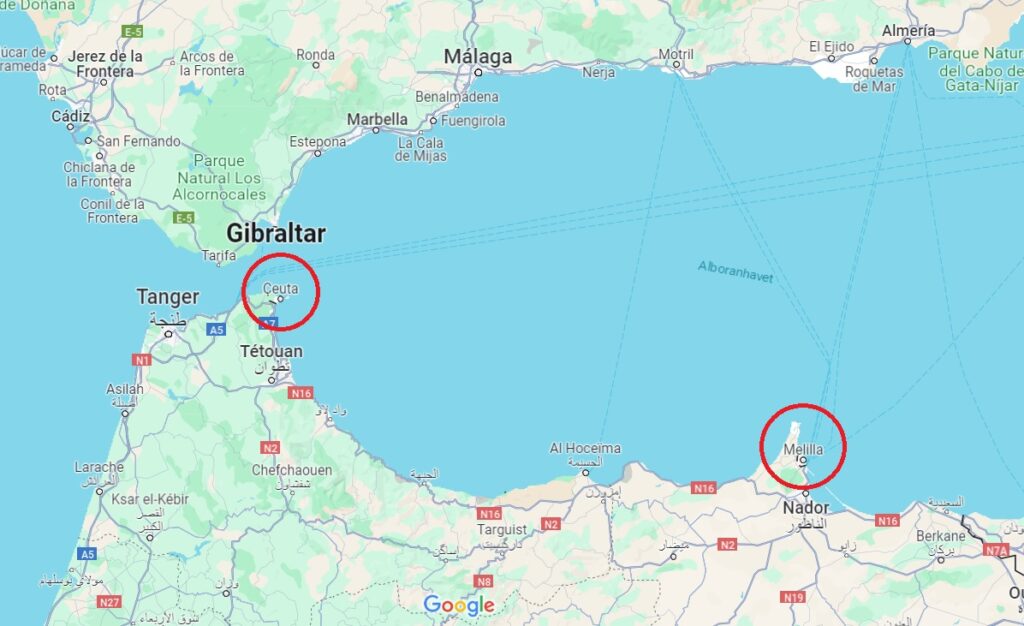
The dark truth about Melilla and Ceuta
As interesting as Melilla and Ceuta are as destinations due to their geographic quirks, it’s important to know that visiting these cities safely is a huge privilege that only those with the “right” passports can do.
Being the only European cities in Africa, Melilla and Ceuta are the gateway to Europe for thousands of people fleeing war, famine and persecution. Both cities are notorious for their rough handling of the thousands of people who have attempted to cross the border fences, as well as the hopeless destinies these people face if they are successful in entering the city territories.
Many have died in clashes with both Spanish and Moroccan security forces. As late as June 2022, 37 African migrants died while trying to cross into Melilla, and hundreds more were injured. Their only crime was wanting a better life for themselves and their families. The massacre is a terrible reminder that Melilla and Ceuta are disputed areas that are incredibly dangerous for migrants. Keep that in mind when you visit the cities. If you want to learn more about the dark sides of Melilla and Ceuta, these two articles are particularly insightful: here and here.

How to get to Melilla and Ceuta
Despite their weird geographical positions, reaching Melilla and Ceuta is easy. However, there is no direct transportation between the two cities.
For Melilla, you can choose to either fly into the city’s small airport, sail from mainland Spain or cross the border by foot from Morocco. Flying is most likely the easiest option as there are direct flights from several Spanish mainland cities. Travelling to Melilla by ferry takes a while (4,5 hours from Motril, 6,5 hours from Almería or 7 hours from Málaga); however, I found this option to be very comfortable and stress-free. For more info on flying or sailing into Melilla, I recommend this blog post! As mentioned, it’s also possible to cross the border from Morocco by foot, however, I wouldn’t recommend this because of the frequent trouble at the border (see above). I haven’t been able to find much information about the border crossings, but this blog post might be of help if you’re considering this way.
To reach Ceuta, the easiest option is to catch the ferry from Algeciras in Spain. It takes just one hour and there are several daily departures. Flying to Ceuta is also possible by helicopter from Algeciras or Málaga, but it is considerably more expensive than the ferry. Similar to Melilla, it is possible to cross into Ceuta from Morocco, and while it wouldn’t be my recommendation, it does seem to be less hassle than the Melilla border. If you want to attempt it, this blog post is a great resource.
Getting around both cities is easy as they are both small and walkable. However, you can also opt for public transport (here and here) or taxis to get around.
How long to stay in Melilla and Ceuta
Both cities are small and can be explored in a single day. However, I would recommend spending at least a night in each and preferably more, especially if you want to go beyond scratching the surface and learn about the interesting histories of the cities.


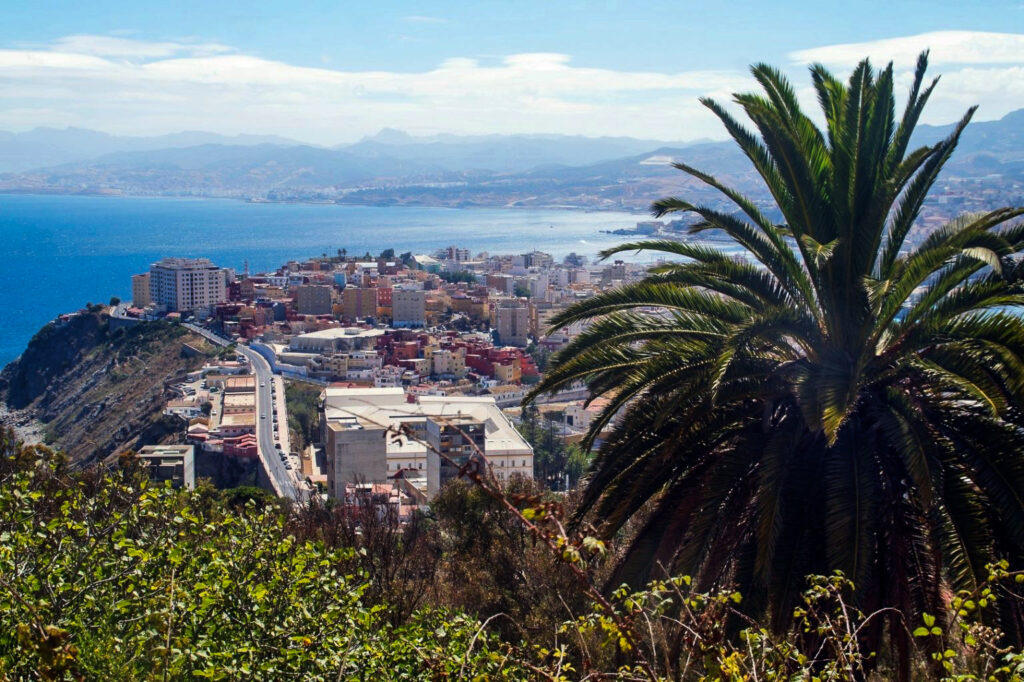
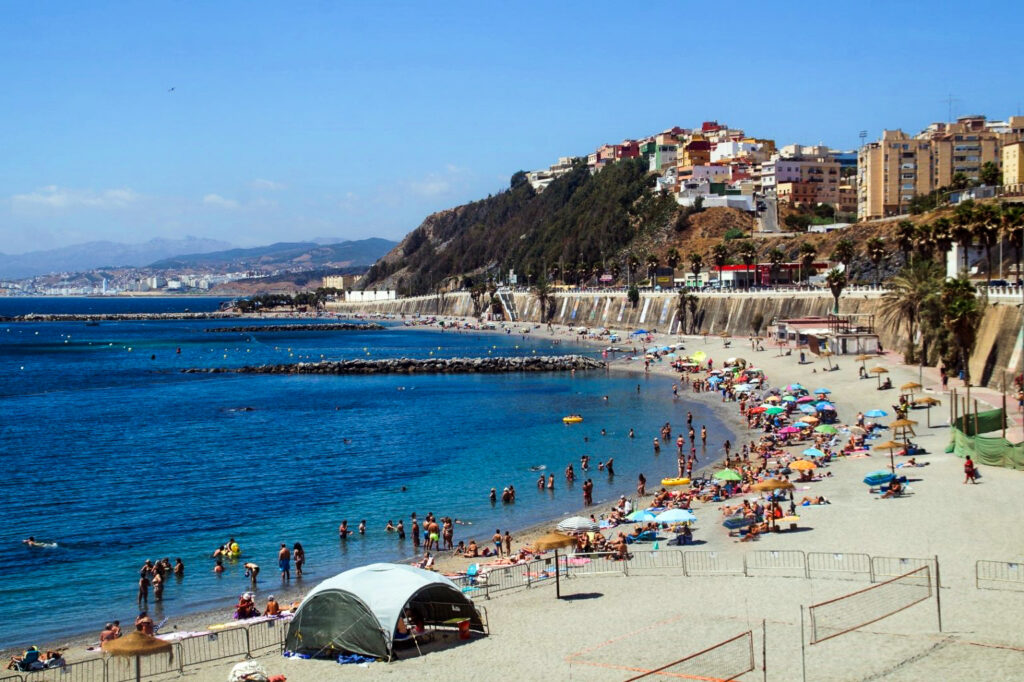
What to see and do in Melilla
- Stroll along Melilla la Vieja. My favourite place in the city is a large fortress north of the port, which was built throughout the 16th and 17th centuries. Several interesting museums are housed within the fortress walls.
- Enjoy the view at Faro de Melilla. Melilla’s lighthouse is located at the edge of the fortress, just north of the harbour, and offers wonderful views over the Mediterranean Sea and the city’s coastline.
- Visit Museo de Arqueologia e Historia. One of the museums located within the walls of the fortress is the archaeology and history museum, which showcases the city’s development from prehistoric times to the present day.
- Explore Museo Histórico Militar de Melilla. Another interesting museum in the fortress walls is the military museum, which tells the story of the city’s rich military history, and features a detailed scale model of the city centre.
- Relax at Playa de la Ensenada de los Galápagos. Melilla has some beautiful beaches, but this one is by far my favourite. The beach is located at a small cove beneath the fortress walls, and the only way to get there is via the tunnel under the walls.
- Explore the city’s Modernist and Art Nouveau architecture. Melilla has the second-largest collection of Modernist and Art Nouveau architecture in Spain (after Barcelona), and some of the best examples are found along Calle López Moreno and Avenida Juan Carlos I Rey
- Visit Palacio de la Asamblea. One of the most notable Modernist buildings in the city is the city hall from 1950, located on Plaza de España.
- Relax in Parque Hernández. Enjoy a stroll through the city’s central park or people-watch from a bench.
- See the border fences. Though brutal, I think it’s important to explore the border area to get a full understanding of the city and its geographic and political position.

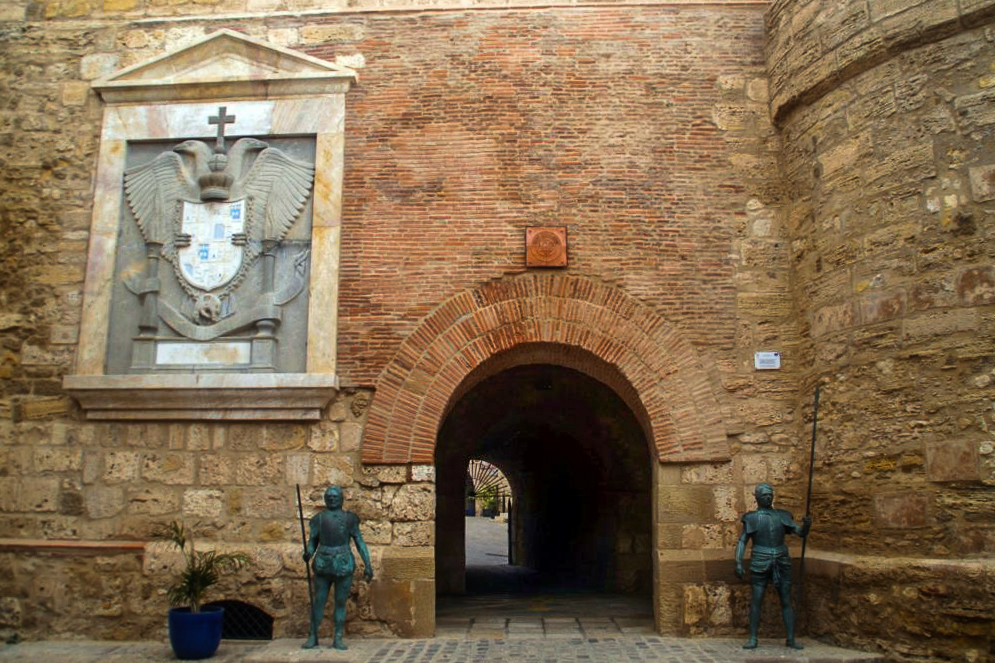


What to see and do in Ceuta
- Explore the Murallas Reales. The ‘Royal Walls’ of Ceuta is a large fortification, built in the 1540s, which has played an important role in the city’s military history.
- See the Casa de los Dragones. The ‘House of the Dragons’ is perhaps the most interesting building in all of Ceuta, and an excellent example of eclectic architecture from the early 20th century, complete with four dragon figures on the roof!
- Enjoy the views at Mirador de San Antonio. This viewpoint offers gorgeous panoramas of the city, mainland Spain and the Rock of Gibraltar across the Mediterranean!
- Hike up to Fortaleza de Hacho. My favourite place in Ceuta was this fortress from the 1770’s, located on the summit of Monte Hacho. The panoramic views of the city alone are worth going up there for! Visiting the fortress is not possible as it’s still in use by the Spanish army, but there’s a trail around the entire fortress that’s open to everyone!
- Stroll along the marina. Take in the nice atmosphere and enjoy the view out to the lighthouse, Faro del Club Nautico, one of the most beautiful buildings in the city.
- See the border fences. Much like Melilla, the border fences are a brutal yet important part of Ceuta’s modern history.


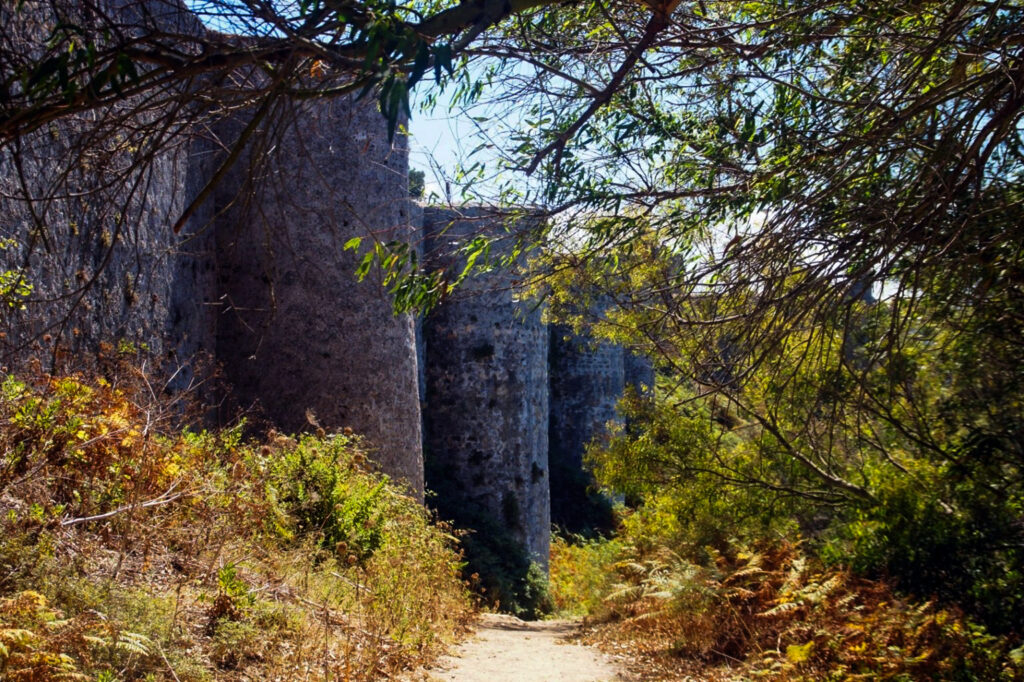

Is it safe for solo female travellers to visit Melilla and Ceuta?
I travelled solo to both Melilla and Ceuta, and I never once felt threatened. I even hiked alone in both cities. I was only met by curious and friendly people. However, as with any city in the world, I recommend not walking alone at night and staying alert at all times.
If you’re nervous about travelling alone as a woman, I recommend this safety guide I wrote a few years back!

I hope that this travel guide has given you enough resources to enjoy a hassle-free trip to Europe’s two frontiers on the African continent.
To me, Melilla and Ceuta are two of the most interesting Spanish cities to visit, however, if you only have time for one of them and are having trouble deciding, I recommend choosing Melilla over Ceuta. In my opinion, Melilla is more interesting architecturally and culturally, and it is way more off the beaten path than Ceuta. However, if you do have time for both, I really do recommend visiting both!
Leave a Comment